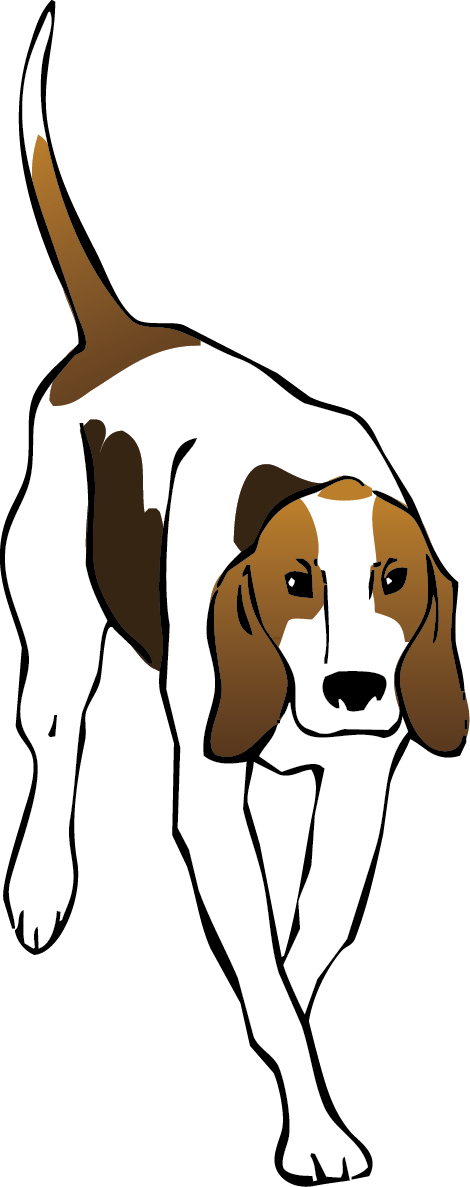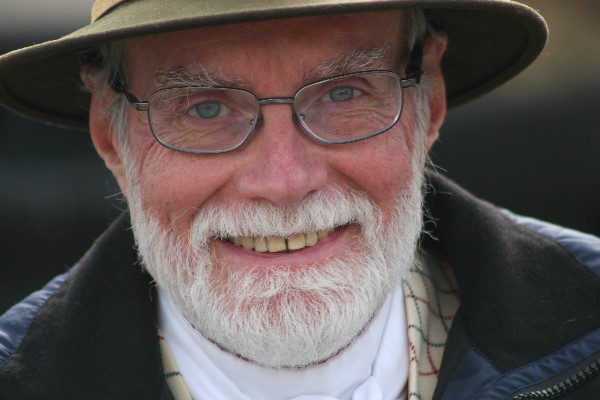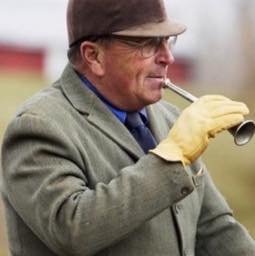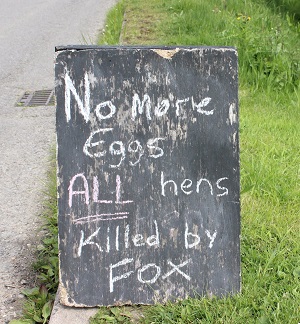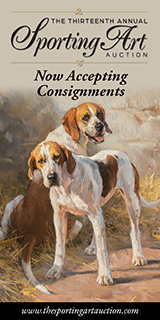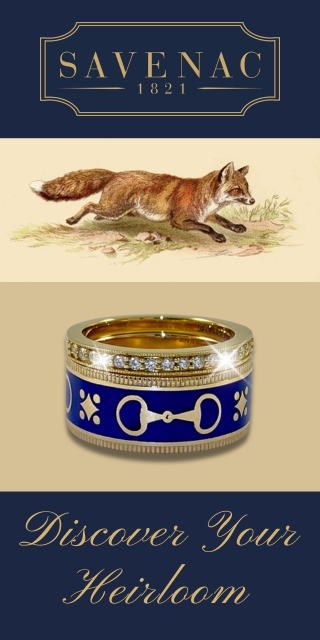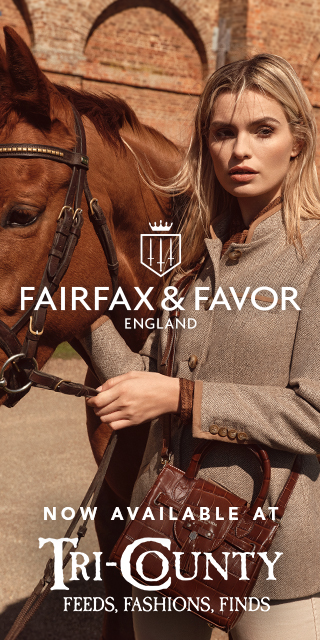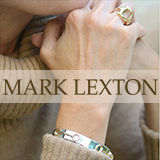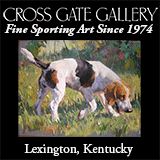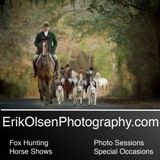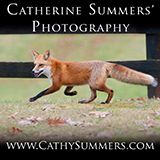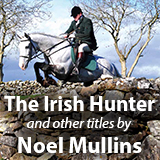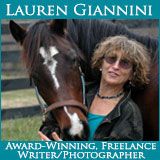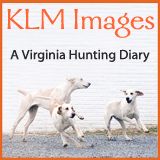Master Of Foxhounds
James Schmidhammer 1950-2024
James L. Schmidhammer, former MFH for Tennessee Valley Hunt, passed away on November 1, 2024.
Read More
Frederick George Getty 1941-2024
Frederick George Getty, the long-serving senior Master and Huntsman for Middlebrook Hounds in Middlebrook, Virginia, has passed away.
Read More
Close Encounters with My Vulpine Friends
James Barclay was born to foxhunting. He, his sister, two brothers, mother, father, grandfather, and great-grandfather all served as Masters of Foxhounds—a family way of life that began in 1896. James served as Master of five hunts from 1983 to 2012: the Essex and Suffolk, Fitzwilliam, Cottesmore, South Wold, and Grove and Rufford. Click for a fuller introduction to James Barclay in Norm Fine’s Blog.
With over two hundred years involvement with various packs and types of hounds under our belt, you will understand it was and always will be the number one rule in the Barclay family to have the greatest respect for our quarry species, be it the fox, deer, or hare. The pleasure they give us is immense, and this comes from not only close observation on a hunting day but during the summer months when they are all, in their own distinctive ways, equally fascinating.
It is the fox, however, that has taken up a very large part of my life, and hardly a day passes when he doesn’t enter my mind in one way or another. And more than likely he will be discussed at some point, especially when he is being blamed for eating someone’s prime poultry! Whenever foxes are talked about, however, it is generally with a large degree of affection, except of course on the day a heinous crime has been committed in his role as the ruthless killer!
My pleasure in writing this has come from looking back and remembering moments when my vulpine friends have behaved in ways that remain etched on my mind. In the past, I have recollected their somewhat strange habits after the death of a particularly well-loved character. This enters another realm, although there are places where both realms meet and it is then when it really does become all the more fascinating!
When a Fox Barks
Evie Good queried Foxhunting Life about her recent experience with a local fox.
“Can someone explain why a fox would bark repeatedly at me?” she asked. “We heard it barking last night close to the house. We found it barking at the dog this morning. When it saw me it ran to the nearby pasture, but stopped and barked some more. Finally, the fox turned and ran out of sight.
We asked two members of our Panel of Experts—Marty Wood, MFH and huntsman Hugh Robards, ex-MFH—for their opinion on this fox’s behavior.
A New Keswick MFH: Her Story
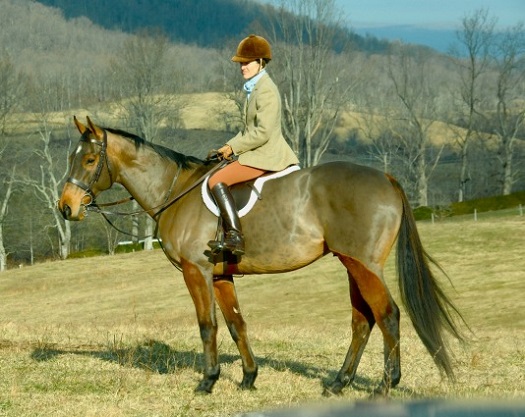 Sandra Forbush photo
Sandra Forbush photo
If you are wondering where in the Keswick countryside the cover picture was taken, you are observant. It was not taken in Keswick but at Massie’s Corner in Rappahannock County where I grew up. My father, Wade Massie, loved to hunt foxes. My Uncle Jim tells how Pop used to get on the school bus in the morning and get off a few stops later where there would be a horse waiting for him. He would hunt all day with Ennis Jenkins, Larry Jenkins’ father, and get back on the bus in the afternoon. His parents were none the wiser.
Later Jack Bruce helped Pop put together a pack of hounds which Clint Eastham, son of famous hound breeder C.C. Eastham, would hunt for him. (It is kind of fun to think about how I would hunt with hounds and people with a lot of the same bloodlines sixty years later).
Pop also hunted with Rappahannock and was a whipper-in there. Current Rappahannock Master Oliver Brown likes to tell a story about how Pop could make any horse quiet. One day a visitor from New Jersey had come down to hunt. The visitor's horse was rank, while Pop’s was going along well. Halfway through the day Pop offered to switch horses. By day's end Pop’s new mount was going along on the buckle, and the visitor’s horse was jigging all around.
Dr. Jock Tate Is New Master at Moore County
The Moore County Hounds (NC) has announced the appointment of Dr. Jock Tate as a new Master of the hunt. Jock, a veterinarian, has been a member of Moore County for more than a half century. He was awarded his colors back in 1959 by Pappy and Ginnie Moss, the hunt’s founders. Jock is described as a consummate horseman who has been involved in equine activities both personally and professionally. On a personal level he has excelled in many areas, including receiving the AHSA high score second year hunter 1969, twenty-two championships or reserve championships, and in the 1970s he trained winning race horses. Professionally, he has spent his entire adult life dedicated to equine medicine. He began at the University of Pennsylvania where he was a surgery instructor and lecturer, and in 1982 he moved to NCSU College of Veterinary Medicine where he is a Full Professor. Over the years he has received numerous honors, published many papers, and successfully obtained grants for research in the field of equine medicine. According to the hunt’s press release, Jock’s long history with and support of the Moore County Hounds, along with his dedication to the preservation of foxhunting and equine sports in general, make him an ideal choice for Master. Dr. Tate joins current Masters Dick Webb (1961), Mrs. Cameron Sadler (2003), Mrs. M. Nixon Ellis (2009), Michael Russell (2009), and David Carter (2014) in the Mastership. Moore County hunts the fox and coyote with Penn-Marydel foxhounds mostly in the fabulous Walthour-Moss Foundation, a natural paradise for both wildlife and horsemen encompassing more than four thousand acres in the Sandhills of North Carolina and established by hunt founders Pappy and Ginnie Moss. Posted May 17, 2015
Read More
Lady Masters of Foxhounds: A Round Table Discussion at NSLM
A round table discussion on the challenges faced by lady Masters will be held at the National Sporting Library & Museum, Middleburg, Virginia, on Saturday, May 23, 2015 from 1:00 to 3:00 p.m. A panel has been assembled to hold a candid discussion on the topic the day before the Virginia Foxhound Show at Morven Park in nearby Leesburg. Participating panelists will be MFHs Joyce Fendley, Casanova Hunt (VA); Marion Thorne, Genesee Valley Hunt (NY); Penny Denegre, Middleburg Hunt (VA); Lynne Lloyd, Red Rock Hounds (NV); and Daphne Wood, Live Oak Hounds (FL). The program will be co-chaired by Penny Denegre and Vivianne Warren from the Orange County Hounds (VA). Dr. John W.D. McDonald, MFH, London Hunt (ON), will moderate. According to a press release from the NSLM, the discussion will focus on experiences from the field told by women with years of hunting leadership. Provocative questions will be asked that address the challenges of women in a traditionally male role. The program will also explore the history of “Three Legends”—Miss Charlotte Haxall Noland, Mrs. Theodora Ayer Randolph, and Mrs. Nancy Penn Smith Hannum—three women who pioneered the role of Lady Master. The program begins with refreshments and mingling with panelists, and includes a moderated discussion with time for questions from the audience. Admission is free for NSLM members and $10.00 for non-members. The National Sporting Library & Museum is dedicated to preserving, promoting and sharing the literature, art and culture of equestrian, angling and field sports. Founded in 1954, NSLM holds thousands of books on sporting topics including foxhunting, angling, equestrianism, and horseracing, among others. The Library collection dates from the sixteenth to twenty-first centuries. The Museum houses exhibits of American and European animal and sporting fine art. Information is shared through exhibitions, lectures, seminars, publications and special events. The NSLM is open to researchers and the general public on Wednesday and Saturday (10:00 a.m. to 5:00 p.m.), and Sunday (1:00 p.m. to 5:00 p.m.). Posted may 9, 2015
Read More
Southern Hound Show Kicks Off the Season
Live Oak Fanfare '10 is Grand Champion of the Southern Hound Show. (L-R): Daphne Wood, MFH, Live Oak Hounds; Michael Ledyard, Esq., MFH Mr. Stewart’s Cheshire Foxhounds; C. Martin Wood III, MFH, Live Oak Hounds; Dale Barnett, huntsman
Captain Ian W. Farquhar, MFH of the Duke of Beaufort (UK), who judged at this show seven years ago, was joined in the ring by John J. Carle II, ex-MFH of the Keswick Hunt (VA).
Ian Farquhar, huntsman for thirty-eight seasons, judged his first show forty-two years ago and has bred nineteen Peterborough champions. Jake Carle, who hunted hounds for twenty-eight seasons, has judged for over forty years at all the major hound shows in the United States. Over the course of the weekend these two very senior judges enjoyed each other immensely and got along famously in the ring despite their English and Bywaters leanings respectively. Interestingly, thirty-four ribbons were won by Crossbreds, and twenty went to English hounds. Two Champions were Crossbred, and two were English.
Hunt-to-Huntsman Relations: A Matter of Concern?
Sidney Bailey retired in 2005 after serving as professional huntsman for the Vale of the White Horse (UK) for forty-three seasons.Foxhunting Life readers demonstrate enormous interest in our articles covering the migration of huntsmen each year at about this time. (See “Huntsmen on the Move,” published last month.) Nancy Mitchell, who has hunted hounds at the Bijou Springs Hunt (CO) over a period of sixteen years, wants to know the why of it.
“I’m curious to know what motivates this ‘spring dance of the huntsmen,’” Nancy wrote. “What circumstances create this phenomenon? Money? Prestige? Politics? Age?”
We thought it was an interesting subject for our Panel of Experts, so we asked Jerry Miller, MFH, C. Martin Scott, ex-MFH, and Hugh Robards, ex-MFH, to weigh in on Nancy's question.
Peter Hitchen MFH (1938–2015)
Vicky Moon photo, circa 1980s
Peter Hitchen, MFH, died January 12, 2015 from complications stemming from injuries sustained in a fall in the hunting field a month earlier. He was seventy-six. At the time of his passing, Peter was serving in his twenty-seventh season as Joint-Master of the Potomac Hunt (MD).
Peter was born in England but didn’t start foxhunting until he emigrated to the U.S. in 1962. After settling in the Washington, D.C. area, Peter was introduced to the sport by a friend. He also met his bride-to-be, Nancy Tilton Orme of Leesburg, Virginia, who also encouraged his involvement with hunting to hounds at The Loudoun Hunt.
From that time on, Peter never let anything interfere with his maturing love of and passion for foxhunting. After many seasons of whipping-in at the New Market/Middletown Valley Hounds (MD) and later at The Potomac Hunt, Peter joined Irvin L. (Skip) Crawford as Joint-Master of Potomac in 1987. With huntsman, Larry Pitts, they oversaw the development of what is unquestionably one of the premier packs of American foxhounds in the United States, giving good sport to their members and garnering championships and grand championships at the hound shows year after year.
